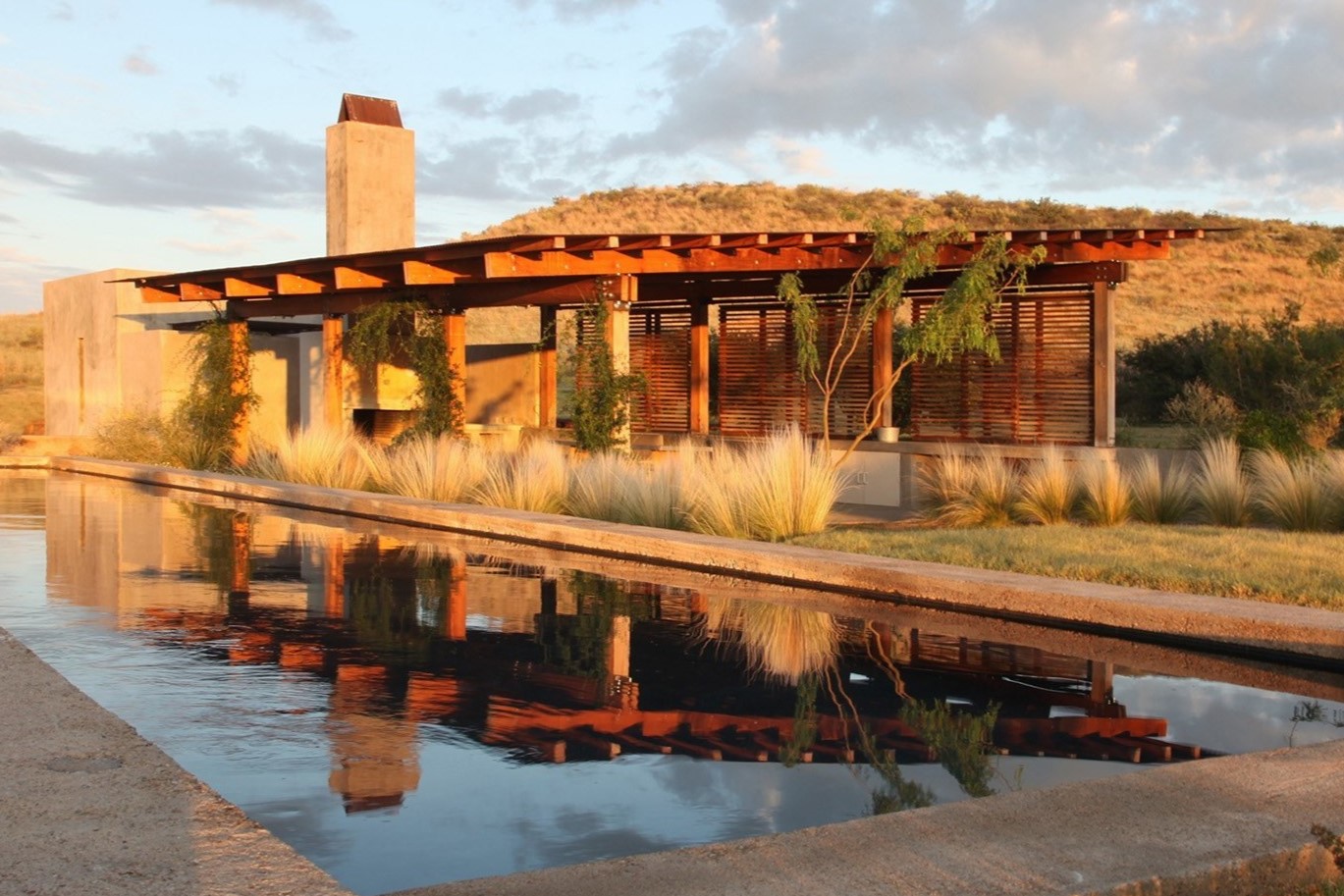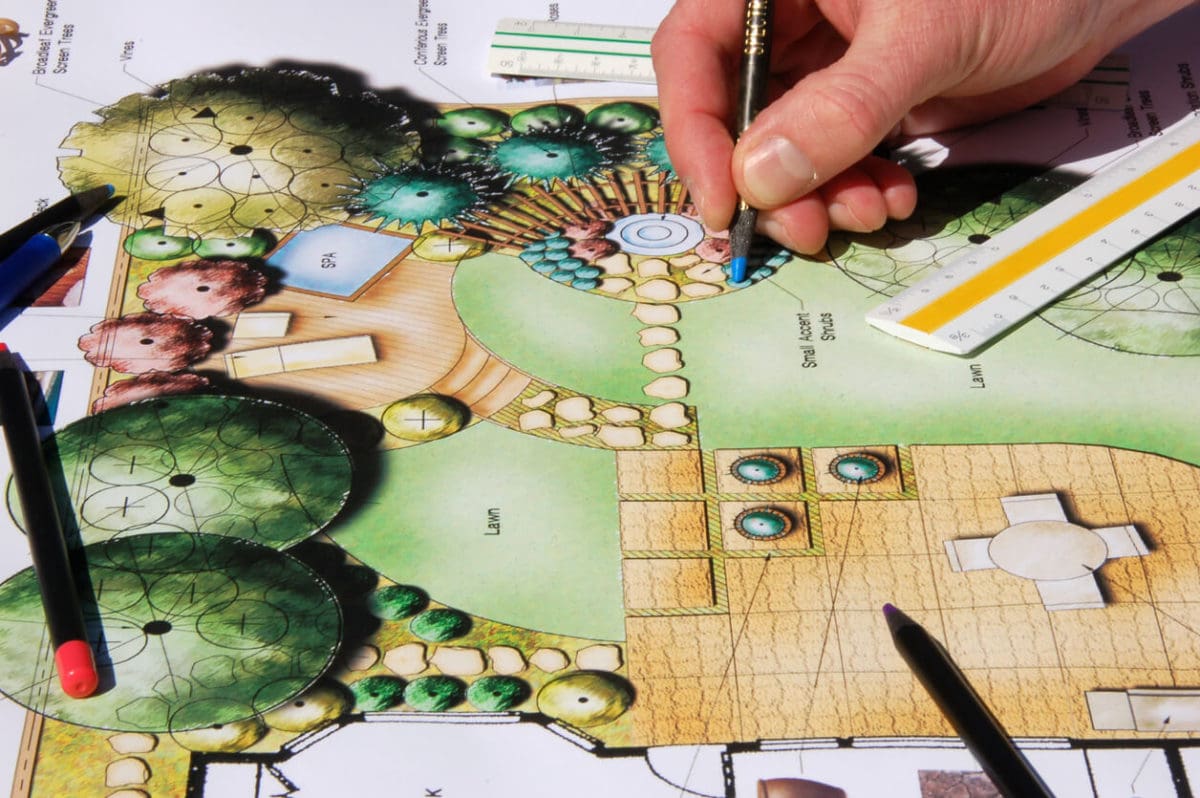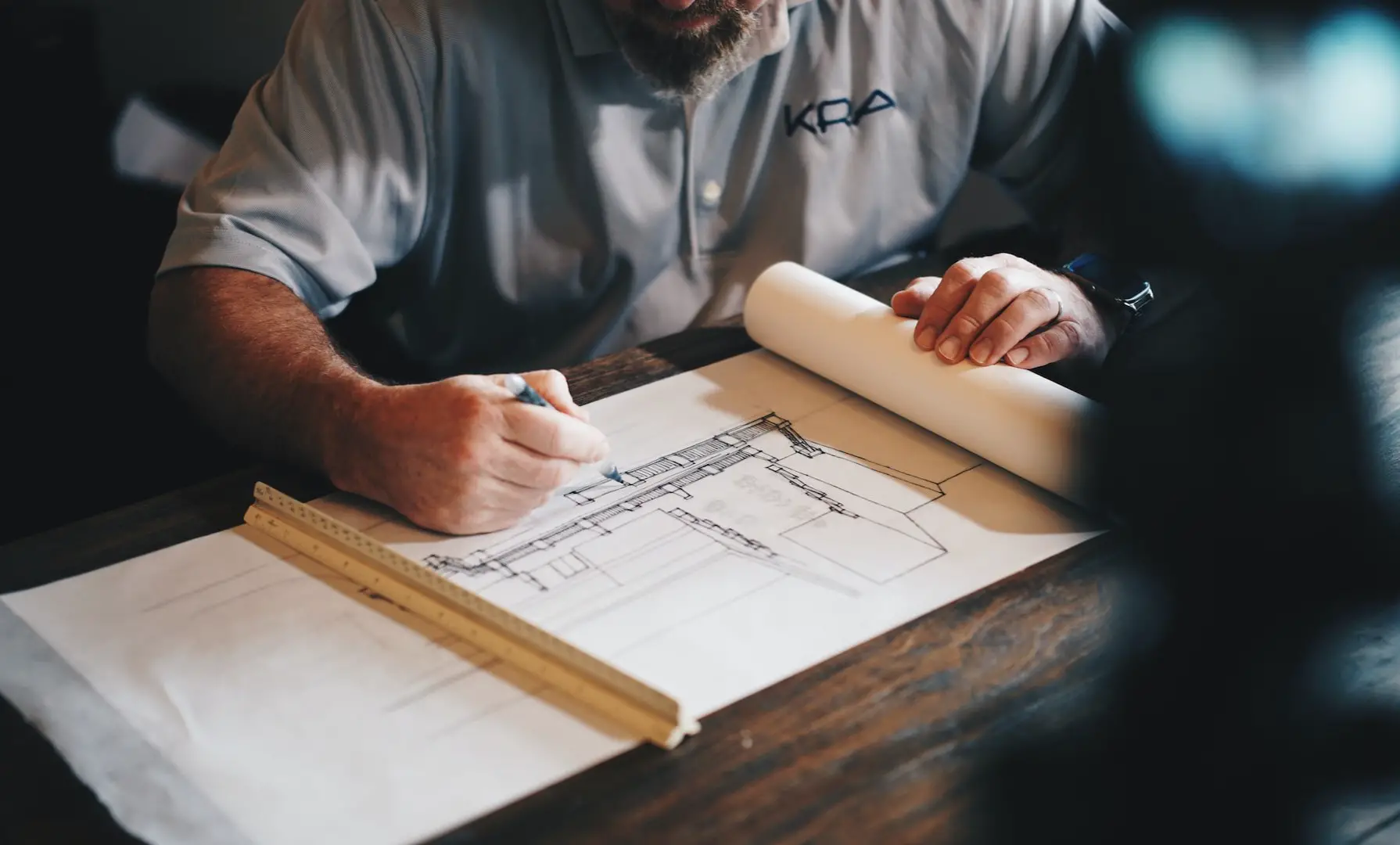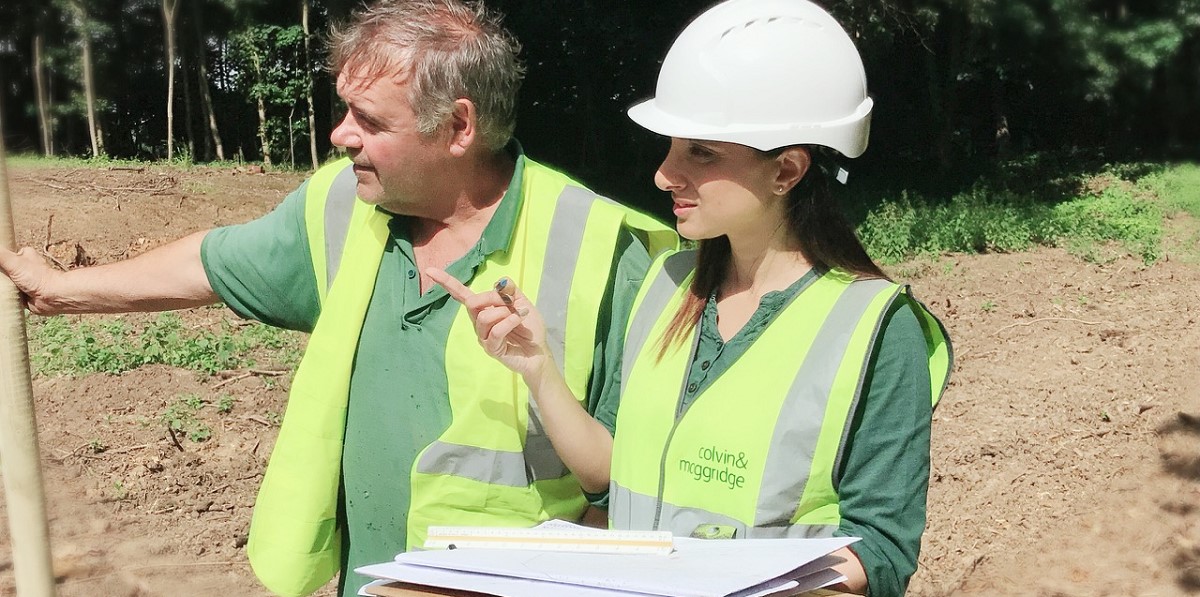Home>diy>Planning & Engineering>How To Become A Landscape Architect In Texas


Planning & Engineering
How To Become A Landscape Architect In Texas
Modified: October 20, 2024
Learn how to become a Landscape Architect in Texas with this comprehensive guide. Discover the important steps, qualifications, and career opportunities in the planning-engineering field.
(Many of the links in this article redirect to a specific reviewed product. Your purchase of these products through affiliate links helps to generate commission for Storables.com, at no extra cost. Learn more)
Introduction
Welcome to the world of landscape architecture! If you have a passion for design, sustainability, and the natural environment, then a career as a landscape architect might be the perfect fit for you. Landscape architects play a crucial role in creating functional and aesthetically pleasing outdoor spaces, ranging from parks and gardens to residential and commercial sites.
As a landscape architect, your work will not only have a significant impact on the physical environment but also on the well-being and quality of life for individuals and communities. Whether you aspire to design breathtaking gardens or develop sustainable urban landscapes, this article will guide you through the steps to become a landscape architect in Texas.
Landscape architecture is a multidisciplinary field that combines elements of art, science, and engineering. It requires a unique blend of creativity, technical knowledge, and problem-solving skills. The profession offers numerous opportunities for personal and professional growth, with the ability to work on a wide range of projects, collaborate with other design professionals, and make a lasting impact on the natural and built environment.
So, if you’re ready to embark on an exciting career journey, let’s delve into the educational requirements, professional experience, licensing and certification process, landscape architecture exam, continuing education, professional organizations, and the job outlook and salary prospects for landscape architects in Texas.
Key Takeaways:
- Landscape architecture in Texas offers a dynamic and rewarding career path, requiring a blend of education, professional experience, licensing, and ongoing professional development to create impactful outdoor spaces.
- The job outlook for landscape architects in Texas is promising, with a growing demand for sustainable design solutions and ample opportunities for growth, creativity, and community impact.
Read more: How To Become Landscape Architect
Educational Requirements
To become a landscape architect in Texas, you will need to complete a comprehensive education program that combines theoretical knowledge with practical skills. The minimum requirement is a bachelor’s degree in landscape architecture from an accredited college or university.
During your undergraduate studies, you will be exposed to various disciplines, including landscape design, site planning, plant materials, ecology, sustainability, and construction. These courses will provide a solid foundation for understanding the principles and techniques required in landscape architecture.
It is crucial to choose an accredited program to ensure that your education meets the standards set by the American Society of Landscape Architects (ASLA) and the Landscape Architectural Accreditation Board (LAAB). Accredited programs guarantee that you will obtain the necessary knowledge and skills to excel in your profession.
In addition to coursework, many programs also offer hands-on experiences through internships or cooperative education opportunities. These practical experiences allow you to apply your classroom learning to real-world projects and gain valuable industry experience.
While a bachelor’s degree is the minimum requirement, some landscape architects choose to pursue a master’s degree in landscape architecture or a related field. A master’s degree can provide a deeper understanding of advanced concepts and research methodologies, and may also enhance your professional opportunities and earning potential.
It is important to note that the education requirements vary from state to state, so it is essential to research the specific requirements of the state in which you plan to practice.
Overall, a comprehensive and accredited education in landscape architecture will equip you with the necessary knowledge and skills to pursue a successful career in this dynamic field.
Professional Experience
Professional experience is a vital component of becoming a successful landscape architect. It provides you with practical skills, industry knowledge, and valuable insight into the profession. To gain professional experience, you can participate in internships, work on design competitions, or seek entry-level positions in landscape architecture firms.
Internships are an excellent way to gain hands-on experience and network with professionals in the field. Many landscape architecture programs have partnerships with firms that offer internship opportunities to students. During an internship, you will have the chance to work on real projects, assist with design tasks, and learn from experienced landscape architects. This experience will not only enhance your skills but also strengthen your resume when seeking permanent positions.
Another valuable avenue for professional experience is participating in design competitions. Design competitions allow you to showcase your creativity, problem-solving abilities, and design skills. Winning or receiving recognition in design competitions can significantly enhance your credibility and open doors to exciting opportunities in the industry.
Once you have gained some experience through internships or competitions, you can start applying for entry-level positions in landscape architecture firms. These positions typically involve assisting senior landscape architects, creating design drawings, conducting site analyses, and collaborating with interdisciplinary teams. This on-the-job experience will further hone your skills and provide you with a deeper understanding of the practical aspects of landscape architecture.
It’s important to note that professional experience is not only about technical skills but also about developing essential skills such as project management, client communication, and teamwork. The ability to effectively communicate and collaborate with clients, architects, engineers, and other professionals is crucial for success in the field of landscape architecture.
As you gain professional experience, it is essential to document your projects and accomplishments. Maintaining a portfolio of your work will help showcase your skills and serve as a valuable tool when applying for jobs or pursuing further education.
Overall, professional experience in landscape architecture will play a significant role in your development as a practitioner and contribute to your success in the field.
Licensing and Certification
Licensing and certification are key requirements for practicing as a landscape architect in Texas. They demonstrate your competency and ensure that you uphold the professional standards of the industry.
In Texas, the Texas Board of Architectural Examiners (TBAE) is responsible for licensing and regulating landscape architects. To become licensed, you must meet specific educational and experience requirements, pass the Landscape Architecture Registration Examination (L.A.R.E.), and complete an application process.
Once you have obtained your bachelor’s or master’s degree in landscape architecture from an accredited program, you will need to accumulate a certain number of years of professional experience. The exact requirement varies depending on your educational background. For example, individuals with a Bachelor of Landscape Architecture degree must complete at least two years of acceptable work experience, while those with a Master of Landscape Architecture degree can fulfill the requirement with one year of work experience.
After meeting the experience requirement, you can apply to take the L.A.R.E., which is a comprehensive examination administered by the Council of Landscape Architectural Registration Boards (CLARB). The L.A.R.E. consists of four sections that assess your knowledge and skills in various areas, including project and construction administration, site design, inventory and analysis, and grading and drainage.
Passing the L.A.R.E. is a significant milestone in your journey towards becoming a licensed landscape architect. Once you have successfully passed the exam, you can submit your application to the TBAE for review. The application process typically involves submitting your exam scores, educational transcripts, experience verification forms, and any additional required documentation.
Upon approval of your application, you will be granted a license to practice as a landscape architect in the state of Texas. It is important to note that maintaining your license requires fulfilling continuing education requirements and completing periodic license renewal applications.
In addition to licensing, you may also consider obtaining professional certifications to further enhance your credentials. The American Society of Landscape Architects (ASLA) offers various voluntary certifications that demonstrate your expertise in specific areas of landscape architecture, such as sustainable design or historic preservation. These certifications can provide a competitive edge in the job market and showcase your commitment to professional growth and excellence.
By obtaining the necessary licensure and pursuing additional certifications, you will establish yourself as a qualified and reputable landscape architect in Texas.
Landscape Architecture Exam
The Landscape Architecture Registration Examination (L.A.R.E.) is a comprehensive exam that assesses the knowledge and skills of aspiring landscape architects. Administered by the Council of Landscape Architectural Registration Boards (CLARB), this exam is a critical step towards becoming a licensed landscape architect.
The L.A.R.E. consists of four sections that evaluate different aspects of landscape architecture practice:
- Section 1: Project and Construction Administration – This section focuses on project management, contract administration, and construction documentation. It assesses your understanding of contractual relationships, project management processes, and the ability to develop and interpret construction documents.
- Section 2: Site Design – This section examines your knowledge of site planning and design principles. It evaluates your ability to analyze and interpret site characteristics, create functional and aesthetic designs, and integrate sustainable practices.
- Section 3: Inventory and Analysis – This section assesses your skills in conducting site inventories and analyzing site conditions. It tests your ability to collect data, assess environmental factors, and use this information to inform the design process.
- Section 4: Grading and Drainage – This section focuses on grading and drainage principles and their application in landscape architecture. It evaluates your understanding of topographic analysis, earthwork calculations, and stormwater management.
Each section of the L.A.R.E. is designed to measure your competency in specific areas of landscape architecture practice. The exam questions include multiple choice, graphic, and vignette formats, allowing you to demonstrate your knowledge and problem-solving abilities.
Preparing for the L.A.R.E. requires a thorough understanding of landscape architecture principles, design strategies, construction processes, and relevant codes and regulations. Many aspiring landscape architects enroll in review courses or study groups to help them prepare for the exam. These resources can offer valuable insights, practice exams, and guidance on exam-taking strategies.
It is important to note that the L.A.R.E. is a challenging exam, and it may take multiple attempts to pass all sections. However, with dedication, focused study, and a solid understanding of landscape architecture practice, you can increase your chances of success.
Once you have successfully passed all sections of the L.A.R.E., you are one step closer to becoming a licensed landscape architect. You can then proceed with the licensing application process, providing your exam scores as part of the overall requirements.
Passing the L.A.R.E. demonstrates your competence and readiness to practice landscape architecture professionally. It validates your knowledge, skills, and ability to contribute to the field, ensuring that you can provide high-quality services to clients and the community.
To become a licensed landscape architect in Texas, you must have a degree from an accredited program, complete relevant work experience, and pass the LARE exam. Check the Texas Board of Architectural Examiners for specific requirements.
Continuing Education
Continuing education is essential for landscape architects to stay updated with the latest industry trends, advancements, and best practices. Engaging in ongoing learning opportunities not only expands your knowledge base but also enhances your professional development and credibility.
In Texas, landscape architects are required to fulfill continuing education requirements to maintain their license. The Texas Board of Architectural Examiners (TBAE) mandates that licensed landscape architects must complete a minimum of 12 professional development hours (PDH) every year.
Professional development hours can be earned through a variety of activities, including attending conferences, workshops, seminars, webinars, and courses. These educational events cover a wide range of topics related to landscape architecture, such as sustainable design, urban planning, ecological restoration, and emerging technologies.
Participating in continuing education programs allows you to stay abreast of industry trends and innovations, expand your network, and gain insights from experts in the field. It also provides opportunities for professional growth, enabling you to acquire new skills and deepen your expertise in specific areas of landscape architecture.
Many professional organizations, such as the American Society of Landscape Architects (ASLA), offer continuing education programs specifically tailored to landscape architects. These programs often provide valuable continuing education units (CEUs) that can be used to meet the TBAE’s required professional development hours.
Additionally, landscape architects can engage in self-study activities to earn PDH. This could include reading professional journals, books, or research papers, as well as participating in online courses or webinars. Self-study activities should be relevant to the practice of landscape architecture and contribute to your professional growth.
It is crucial to keep track of your continuing education activities and maintain records of the PDH earned. The TBAE may randomly audit licensed landscape architects to ensure compliance with the continuing education requirements. Therefore, it is important to retain documentation, such as certificates of attendance or completion, as proof of participation in qualifying activities.
By fulfilling the continuing education requirements, landscape architects demonstrate their commitment to ongoing professional development and the pursuit of excellence in their field. Engaging in continuous learning opportunities not only keeps you informed and up-to-date but also helps you maintain a competitive edge in the industry.
Professional Organizations
Professional organizations play a crucial role in the landscape architecture industry, providing a platform for networking, collaboration, and professional development. Engaging with these organizations can help you stay connected with fellow professionals, access valuable resources, and stay updated with the latest trends and advancements in the field. Here are a few notable professional organizations for landscape architects:
- American Society of Landscape Architects (ASLA): The ASLA is the national professional association for landscape architects in the United States. It provides a wealth of resources, including continuing education opportunities, publications, research, and advocacy for the profession. Joining this organization can offer networking opportunities, access to industry events, and valuable insights into best practices.
- Texas Chapter of the American Society of Landscape Architects (TX ASLA): The TX ASLA is the state chapter of the ASLA and focuses on addressing the unique issues and opportunities for landscape architects in Texas. It organizes various events, educational programs, and advocacy initiatives tailored to the Texas landscape architecture community. Becoming a member of the TX ASLA allows you to connect with local professionals, stay informed about regional industry updates, and contribute to the advancement of the profession within the state.
- Urban Land Institute (ULI): The ULI is a multidisciplinary organization that brings together professionals from various fields, including landscape architecture, urban planning, and real estate. It provides a platform for cross-industry collaboration and knowledge sharing. Membership in the ULI offers access to research publications, educational programs, and networking events, allowing landscape architects to contribute to shaping sustainable and thriving urban environments.
- National Association of Landscape Professionals (NALP): The NALP is an association that represents professionals in the landscape industry, including landscape architects, contractors, and maintenance professionals. It offers educational resources, business networking opportunities, and advocacy efforts to support the growth and success of landscape professionals. Joining the NALP can provide landscape architects with a broader perspective on the industry and opportunities to connect with other professionals in related disciplines.
These organizations offer a variety of benefits, including access to industry publications, job boards, mentorship programs, and professional development opportunities. They often host conferences, seminars, and workshops that provide a platform for learning, connecting with industry leaders, and showcasing your work.
Being an active member of professional organizations not only allows you to stay connected with the landscape architecture community but also demonstrates your commitment to the profession and your dedication to continued growth and improvement. It provides opportunities to expand your professional network, gain mentorship, and contribute to the advancement of the field.
Joining one or more of these professional organizations can be a valuable investment in your career as a landscape architect, offering a wide range of resources, support, and connections to help you succeed in the industry.
Job Outlook and Salary
The job outlook for landscape architects in Texas is promising, with a growing demand for professionals who can design sustainable, functional, and visually appealing outdoor spaces. The increasing focus on environmental preservation, urban planning, and landscape revitalization has created a need for skilled landscape architects to transform and enhance the built environment.
According to the U.S. Bureau of Labor Statistics, the employment of landscape architects is projected to grow 4% from 2020 to 2030, which is about as fast as the average for all occupations. This growth is driven by factors such as population growth, urbanization, and the need for sustainable design solutions.
In Texas specifically, the state’s rapid population growth and urban development present exciting opportunities for landscape architects. Urban and suburban areas are expanding, requiring the expertise of landscape architects to create green spaces, parks, and sustainable developments. Additionally, Texas is known for its diverse ecosystems, which provide unique opportunities for landscape architects to work on projects that integrate natural beauty and preservation with human needs.
As for the salary, the average annual wage for landscape architects in Texas is around $80,000. However, salaries can vary depending on factors such as experience, education level, location, and the type of employer. Landscape architects working for architectural and engineering firms or in management positions often earn higher salaries compared to those in government agencies or in entry-level positions.
Furthermore, the benefits of being a landscape architect extend beyond salary. Many professionals in this field find great fulfillment in creating meaningful outdoor spaces, improving communities, and making a positive impact on the environment.
Overall, the job outlook for landscape architects in Texas is promising, with ample opportunities for growth and creativity. By staying up-to-date with industry trends, continuously honing your skills, and networking within the landscape architecture community, you can position yourself for a successful and rewarding career in this dynamic field.
Conclusion
Becoming a landscape architect in Texas requires a combination of education, professional experience, licensing, and ongoing professional development. It is a dynamic and rewarding career that allows you to design outdoor spaces that enhance the quality of life for individuals and communities.
Earning a bachelor’s or master’s degree in landscape architecture from an accredited program provides you with a solid foundation in the principles and techniques of landscape design. Gaining professional experience through internships, design competitions, or entry-level positions allows you to apply your knowledge and develop essential skills in project management, communication, and collaboration.
Obtaining a license through the Texas Board of Architectural Examiners (TBAE) is a critical step towards practicing as a landscape architect in Texas. This involves fulfilling the educational and experience requirements, passing the Landscape Architecture Registration Examination (L.A.R.E.), and successfully completing the application process.
Continuing education is key to staying updated with industry advancements and maintaining your license in Texas. Participating in professional organizations, such as the American Society of Landscape Architects (ASLA) and the Texas Chapter of ASLA, provides networking opportunities, continuing education resources, and a platform for professional growth.
The job outlook for landscape architects in Texas is favorable, with a projected growth rate that is about average compared to other occupations. Texas’s population growth, urban development, and emphasis on sustainability create a demand for skilled professionals who can create functional and visually appealing outdoor spaces.
While salary varies depending on factors such as experience and location, landscape architecture offers not only competitive compensation but also the satisfaction of working in a field that combines creativity, environmental stewardship, and community impact.
In conclusion, pursuing a career as a landscape architect in Texas requires dedication, education, and ongoing professional development. By obtaining the necessary qualifications, staying connected with professional organizations, and continuously honing your skills, you can embark on a fulfilling journey as a landscape architect, shaping the outdoor spaces of tomorrow and positively impacting the world around you.
Frequently Asked Questions about How To Become A Landscape Architect In Texas
Was this page helpful?
At Storables.com, we guarantee accurate and reliable information. Our content, validated by Expert Board Contributors, is crafted following stringent Editorial Policies. We're committed to providing you with well-researched, expert-backed insights for all your informational needs.















0 thoughts on “How To Become A Landscape Architect In Texas”